It was an eye opening experience to visit the well preserved Whaling Museum in Discovery Bay. The whaling station ceased operations in late Nov 1978. The whales were caught off the continental shelf, about 3 hours south by ship.
The flensing platform , is where the whales were hauled up by winches , to have their blubber removed from their body. This was done with very sharp flensing knives. The whalers wore crampons under their gum boots so that they could mount the whale. The whole was then pulled up further to the cutting platform, to saw off the head and cut the whale up into manageable pieces. The platform had 6 chutes that lead directly into the boilers. This separated the oil, and grax. A whale took about 3 hours in the boilers .
There is an old whaling ship in dry dock, now part of the museum. Worth noting that the whales were harpooned from the ship but not dragged onto the ship at any time. Rather, they were pulled along the ship after having compressed air blown into them so that they float. Each whale got a radio beacon tagged to them and were left for later pick up. Most harpooned in 1 day by 1 ship was 6 whales. The dead whales were left by a nearby island and fetched by tug boat as space became available on flensing deck.
The cutting platform was covered in whale fat and blood. It was thus very slippery. The chutes to the boilers were not covered, thus a real possibility existed to slip into the boiler by mistake!
The whole bay was filled with blood and was red! So no surprise that there were a lot of sharks here too. The whalers also killed the sharks that would feed on the whales, to recover the blubber in their stomachs. They didn’t want to lose pay for that!
NOTE : SOME PHOTOS AND PHOTOS OF PHOTOS ARE VERY GRAPHIC
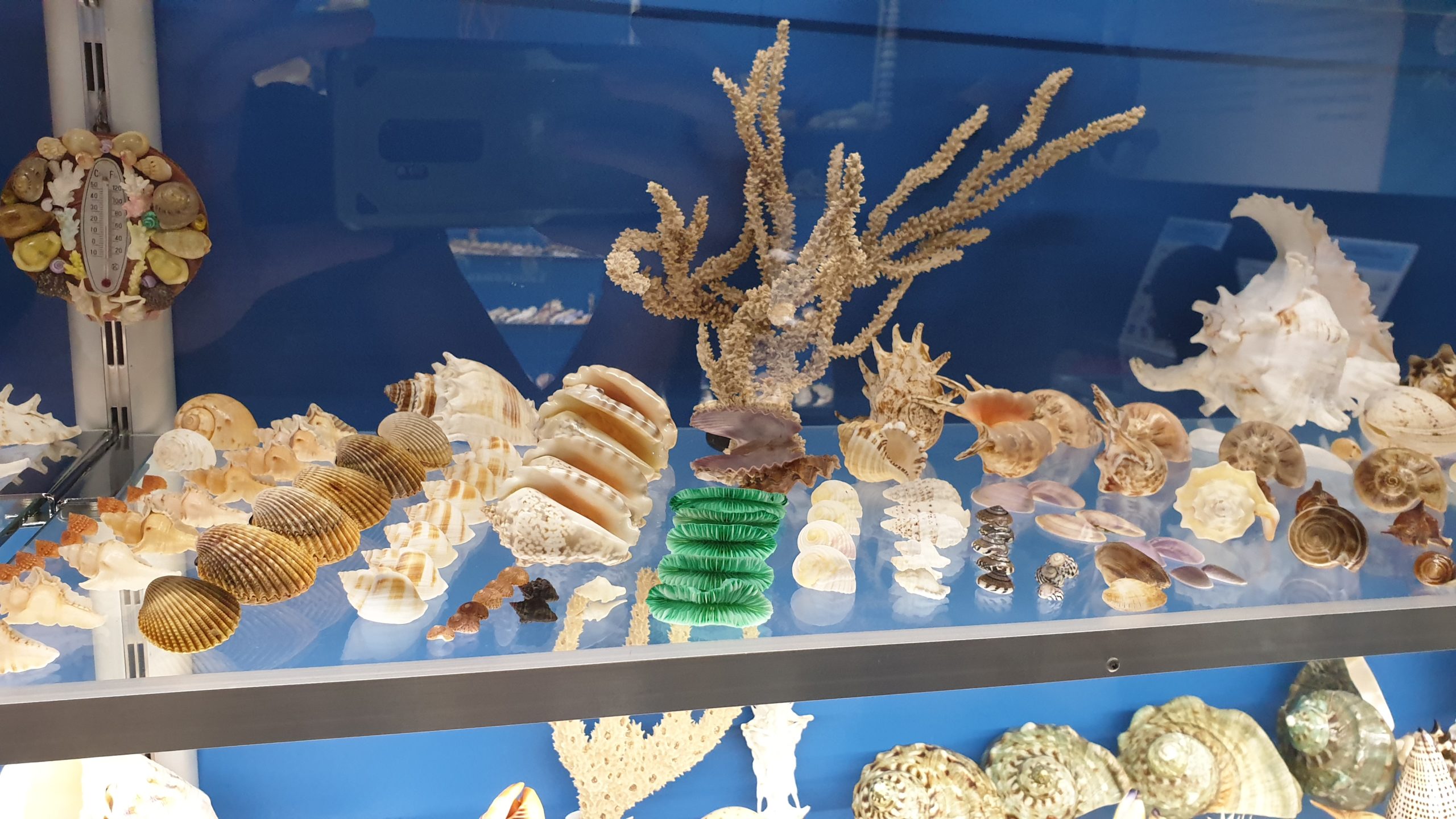
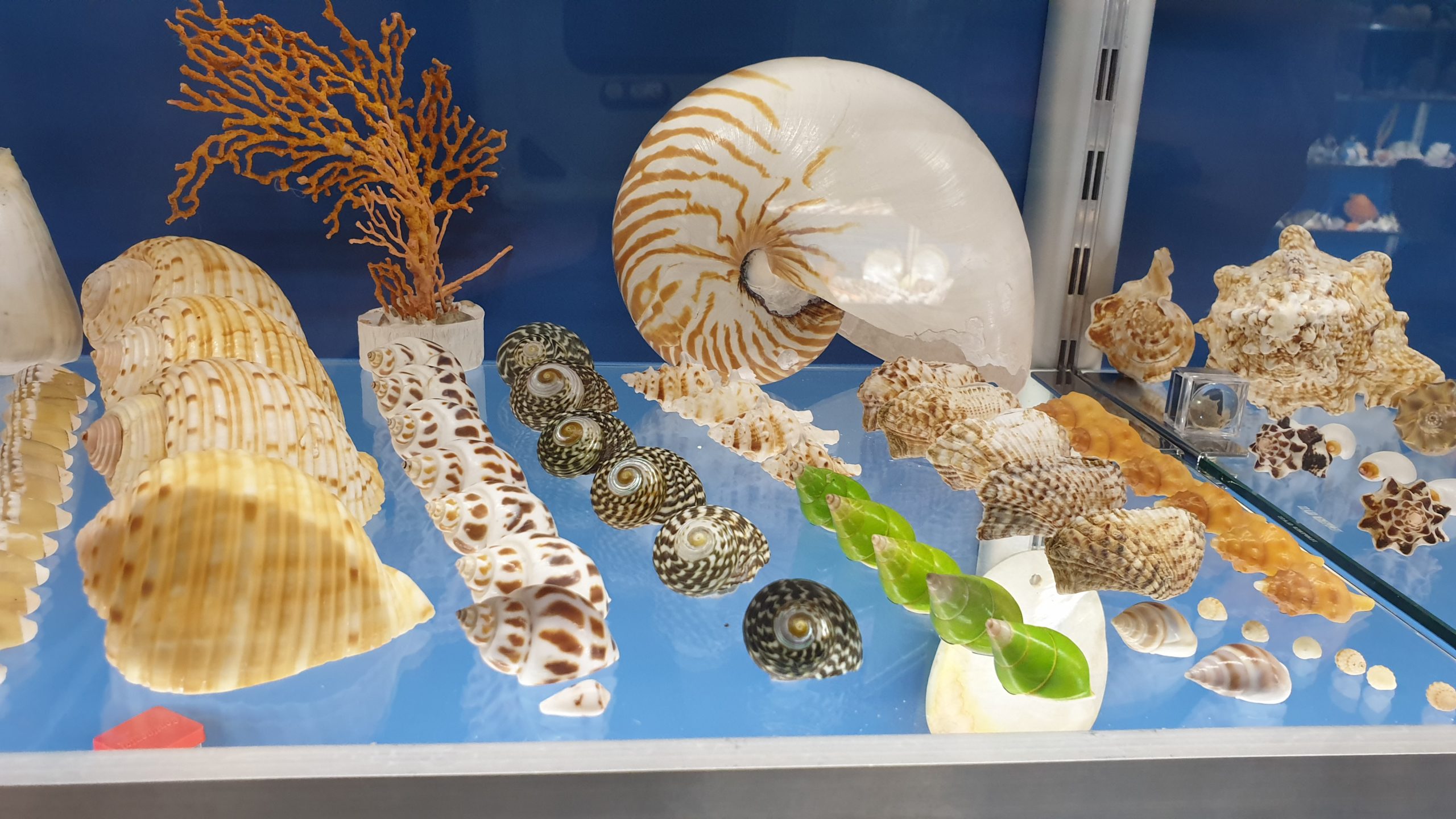
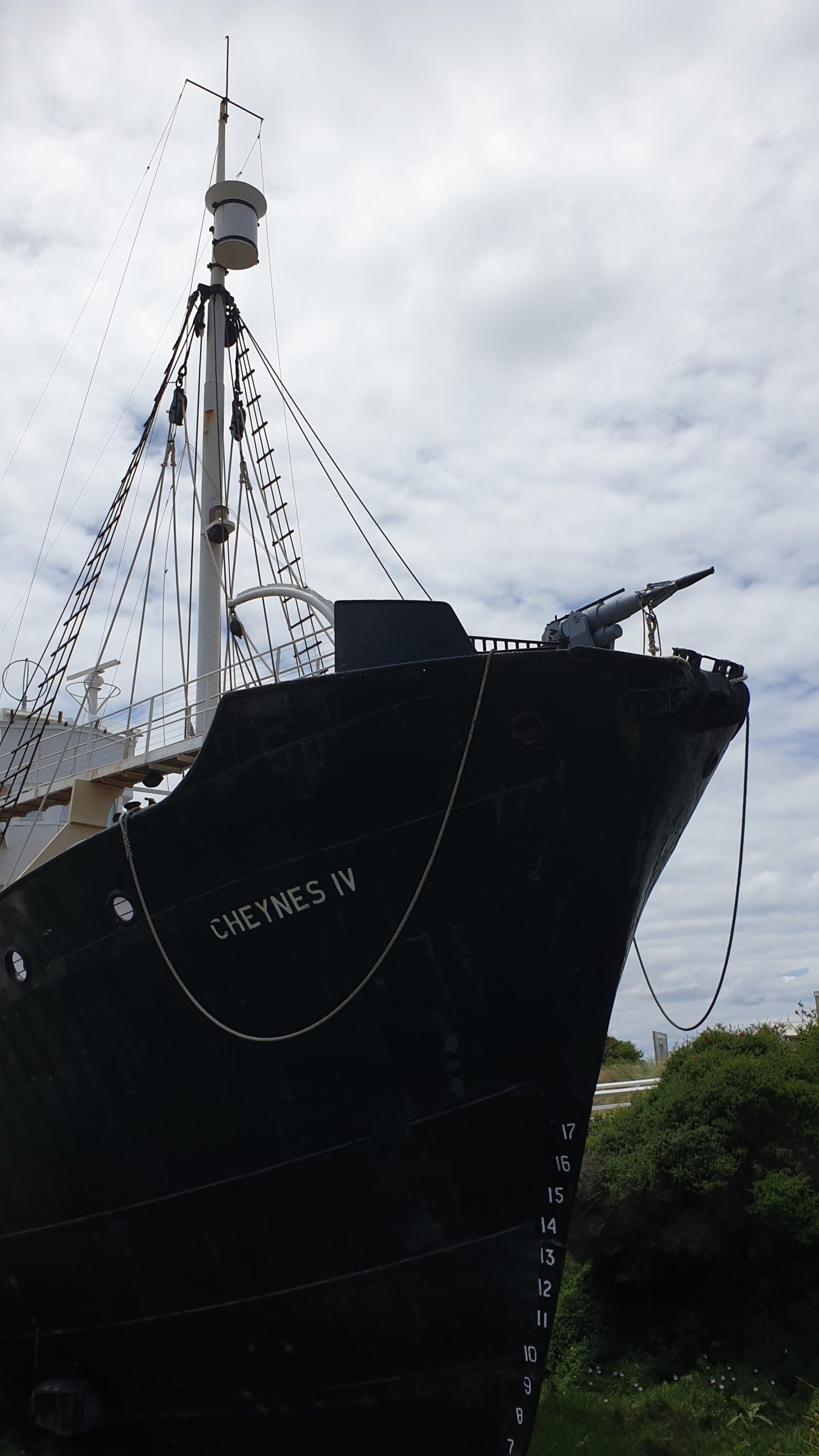
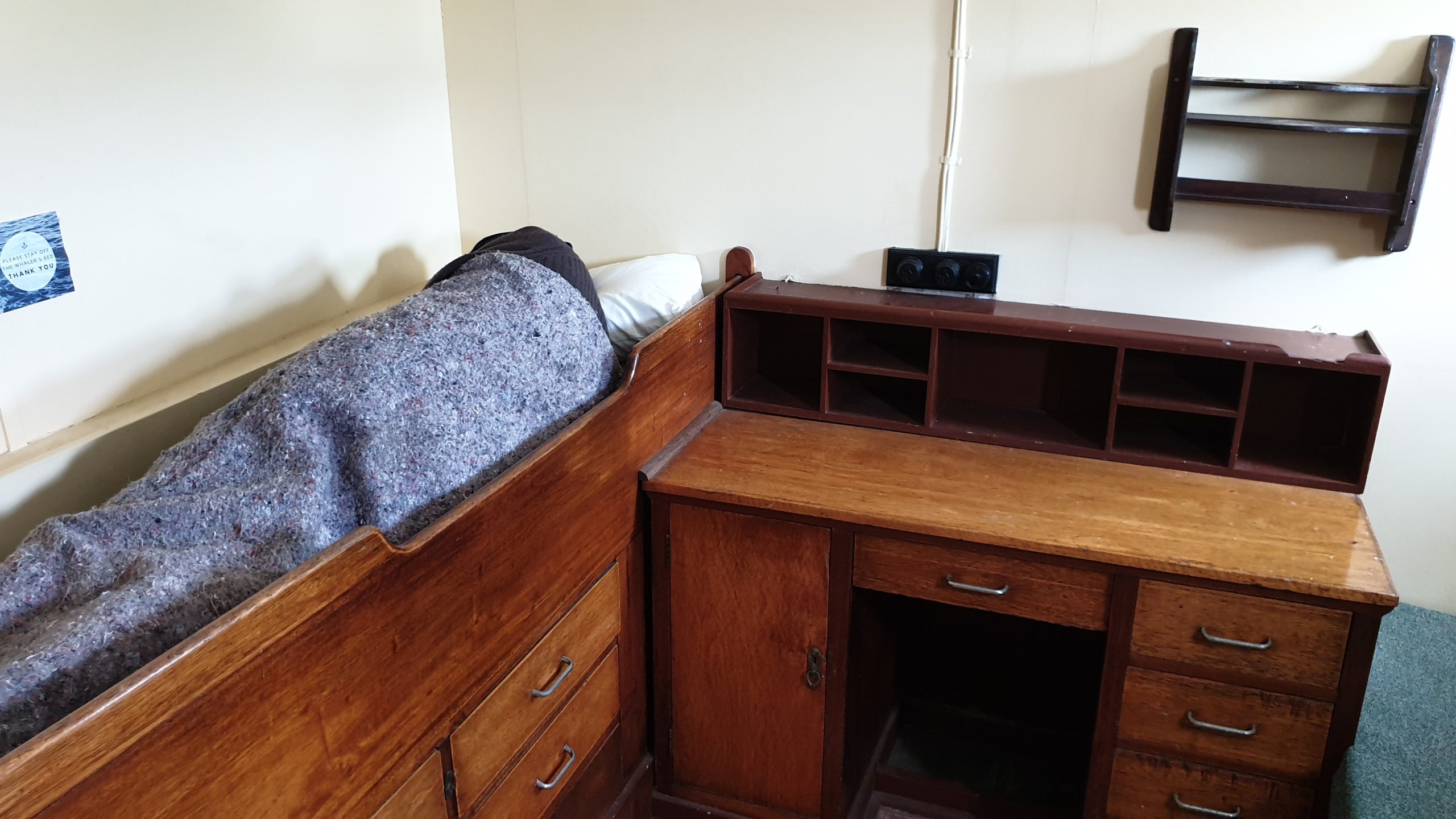
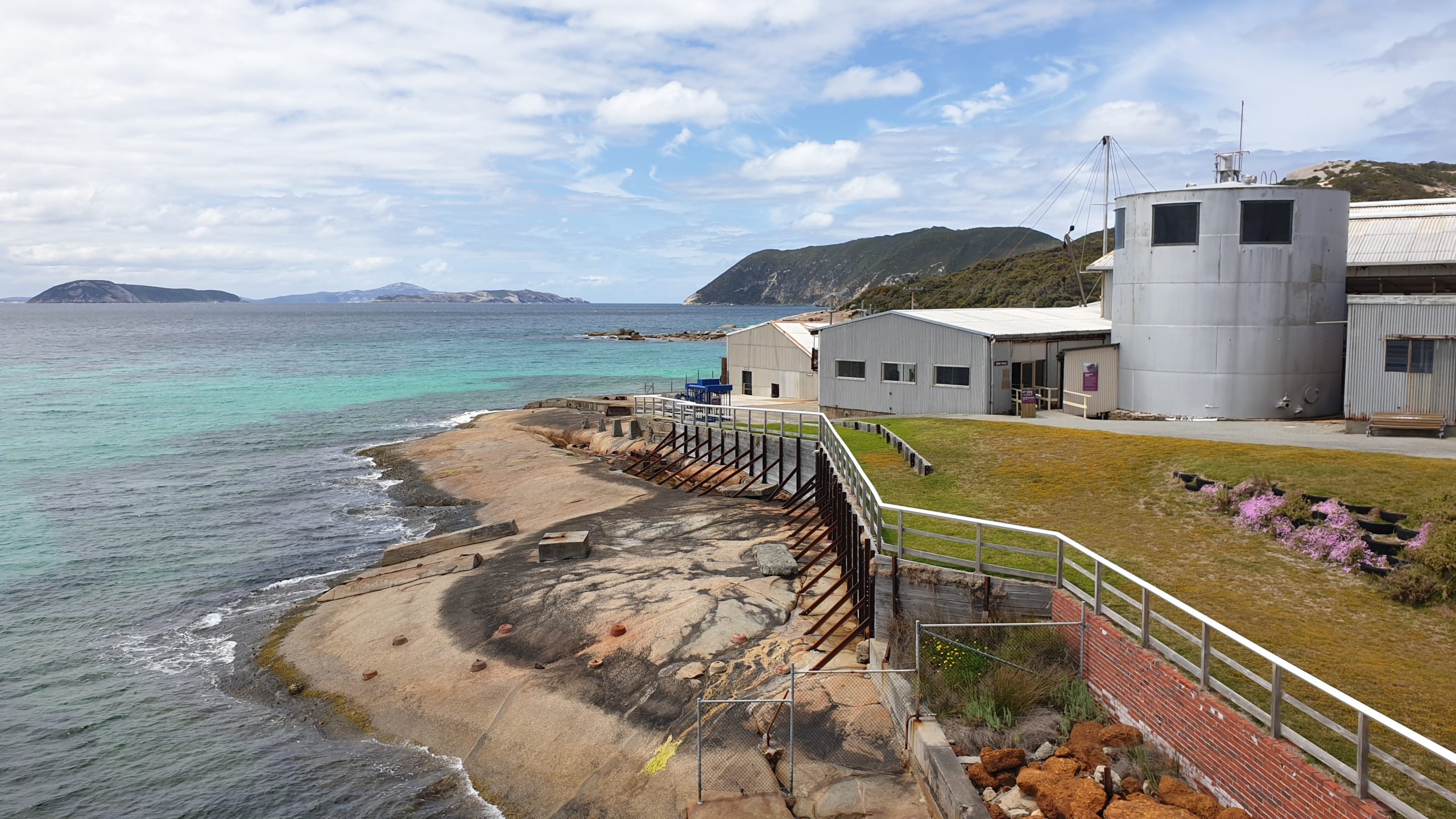
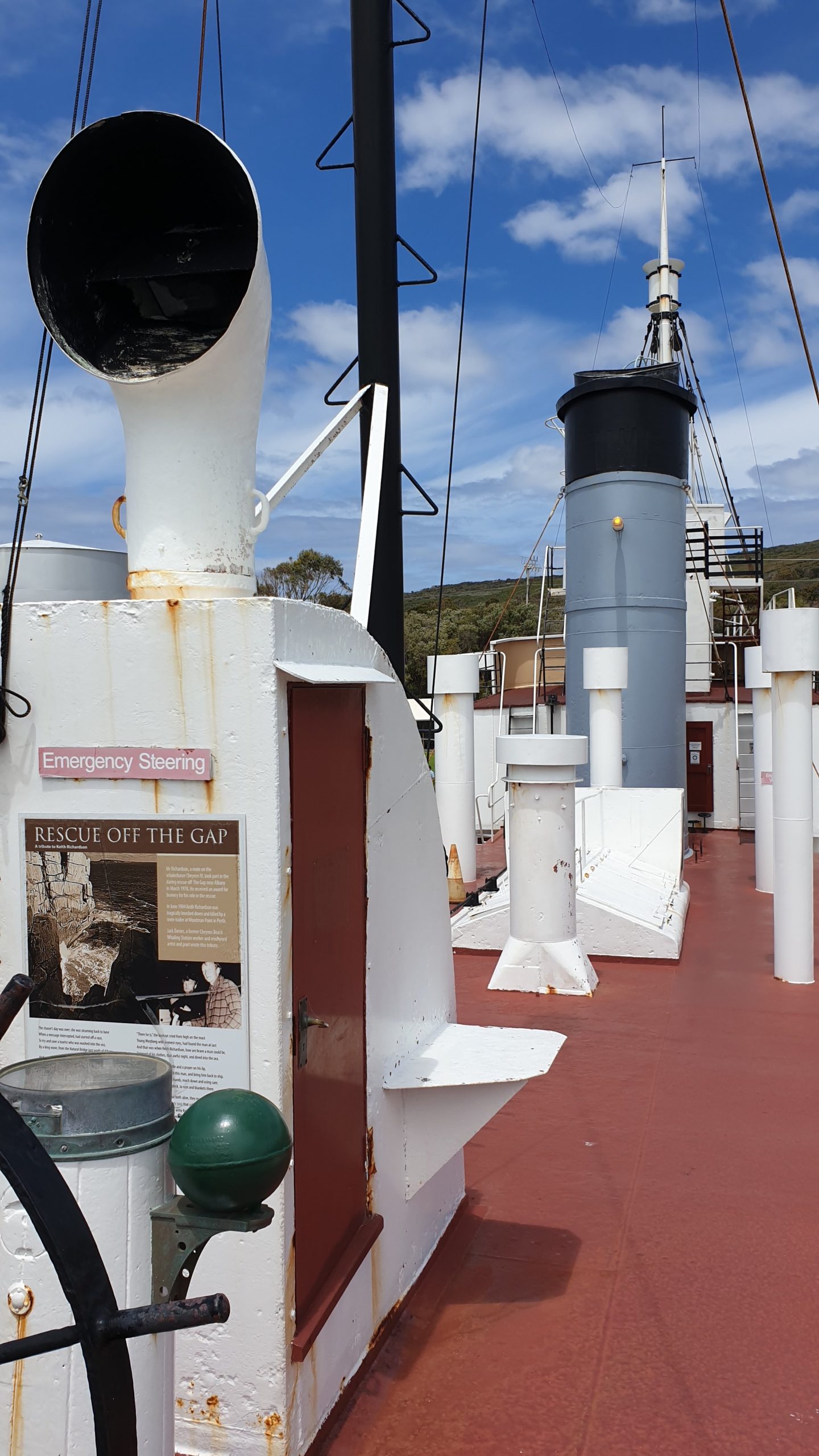
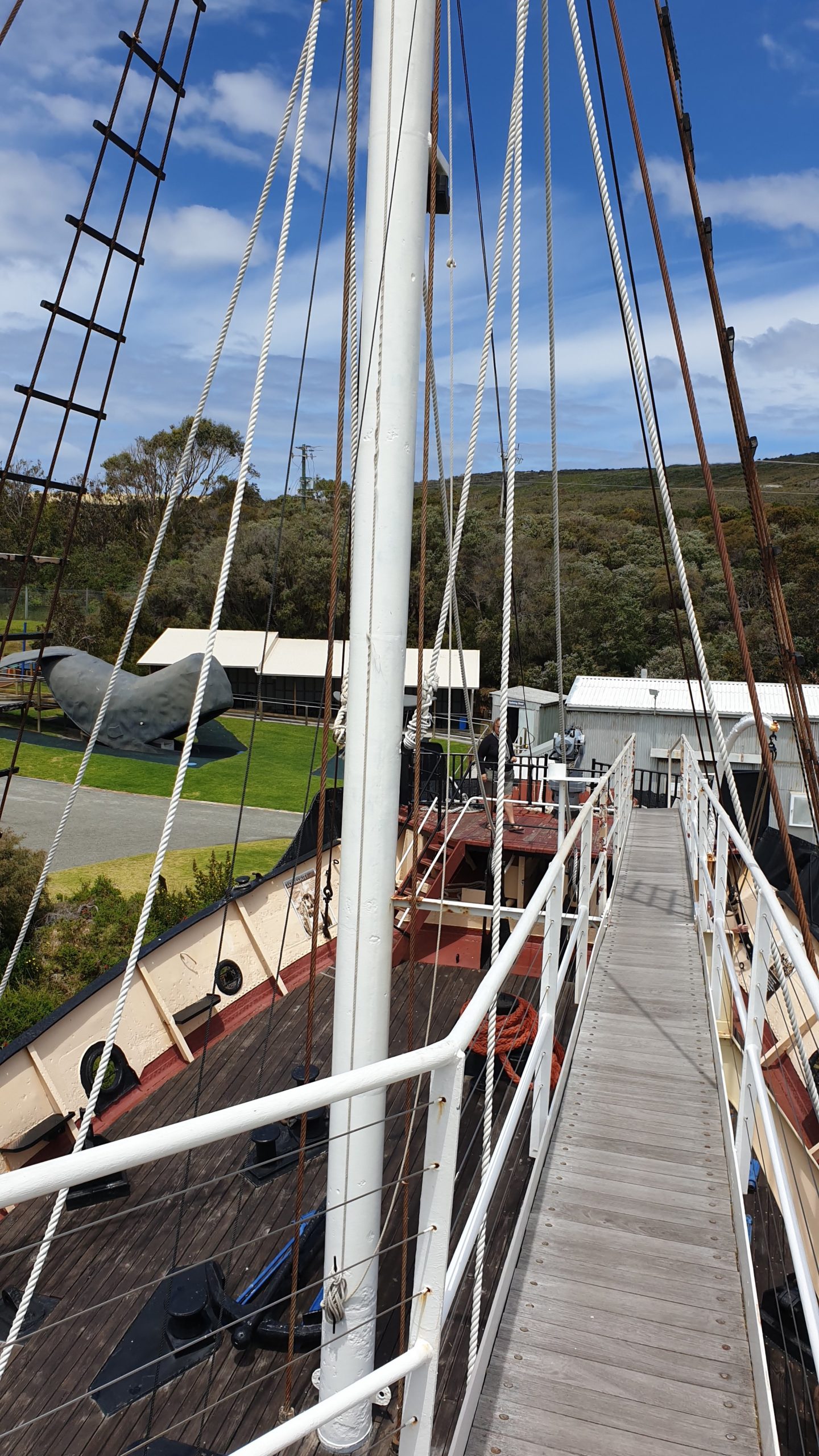
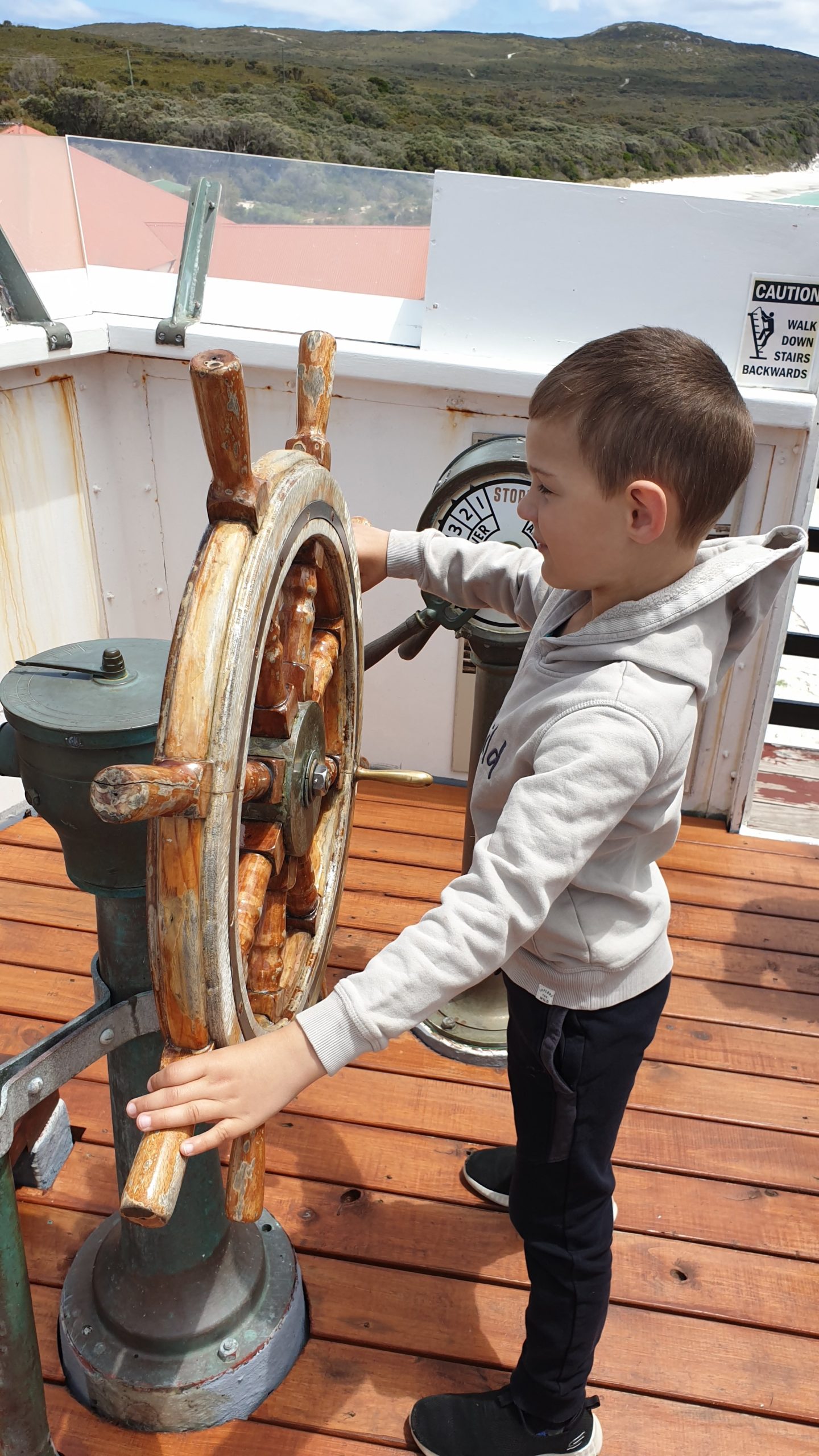
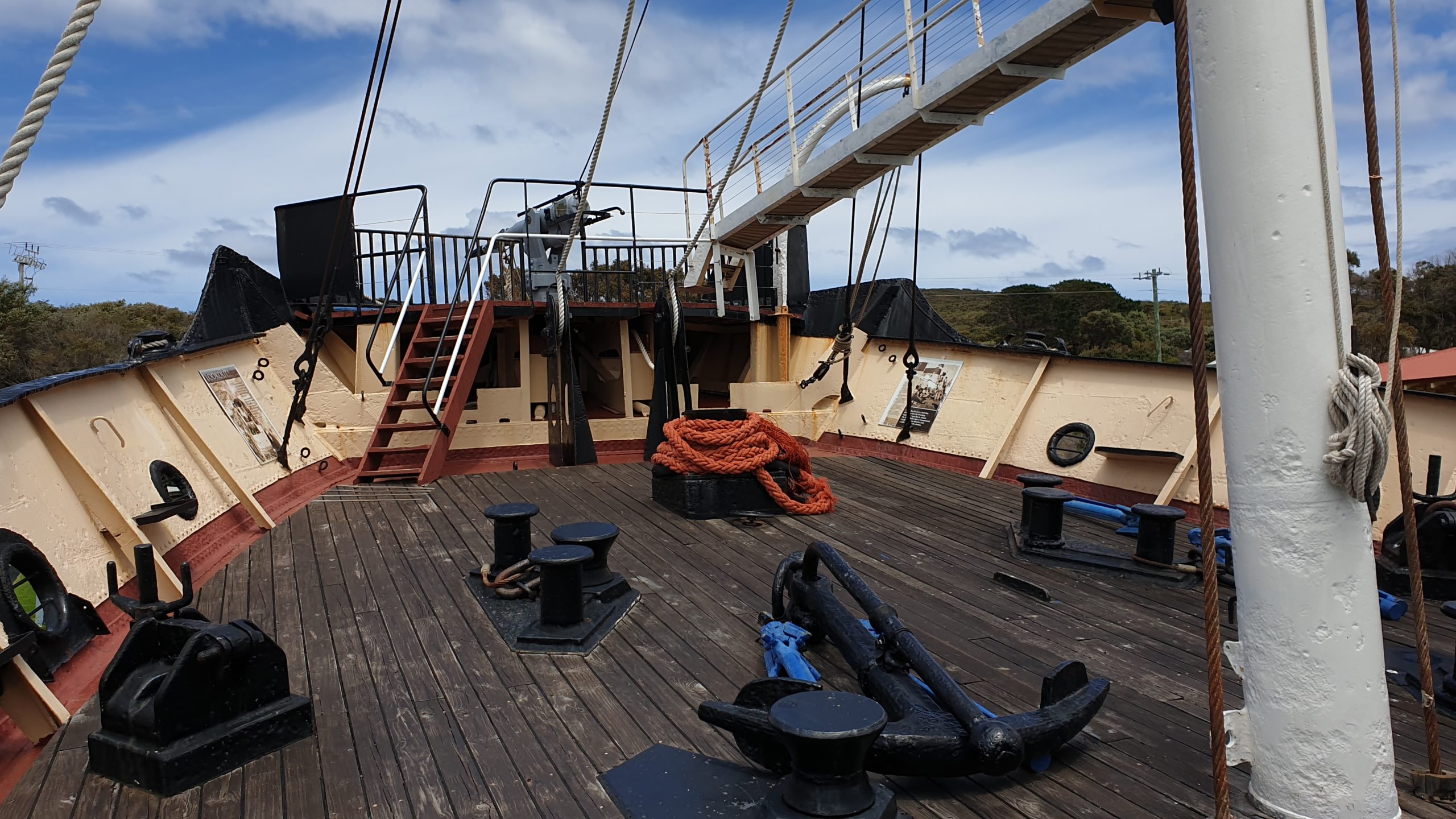
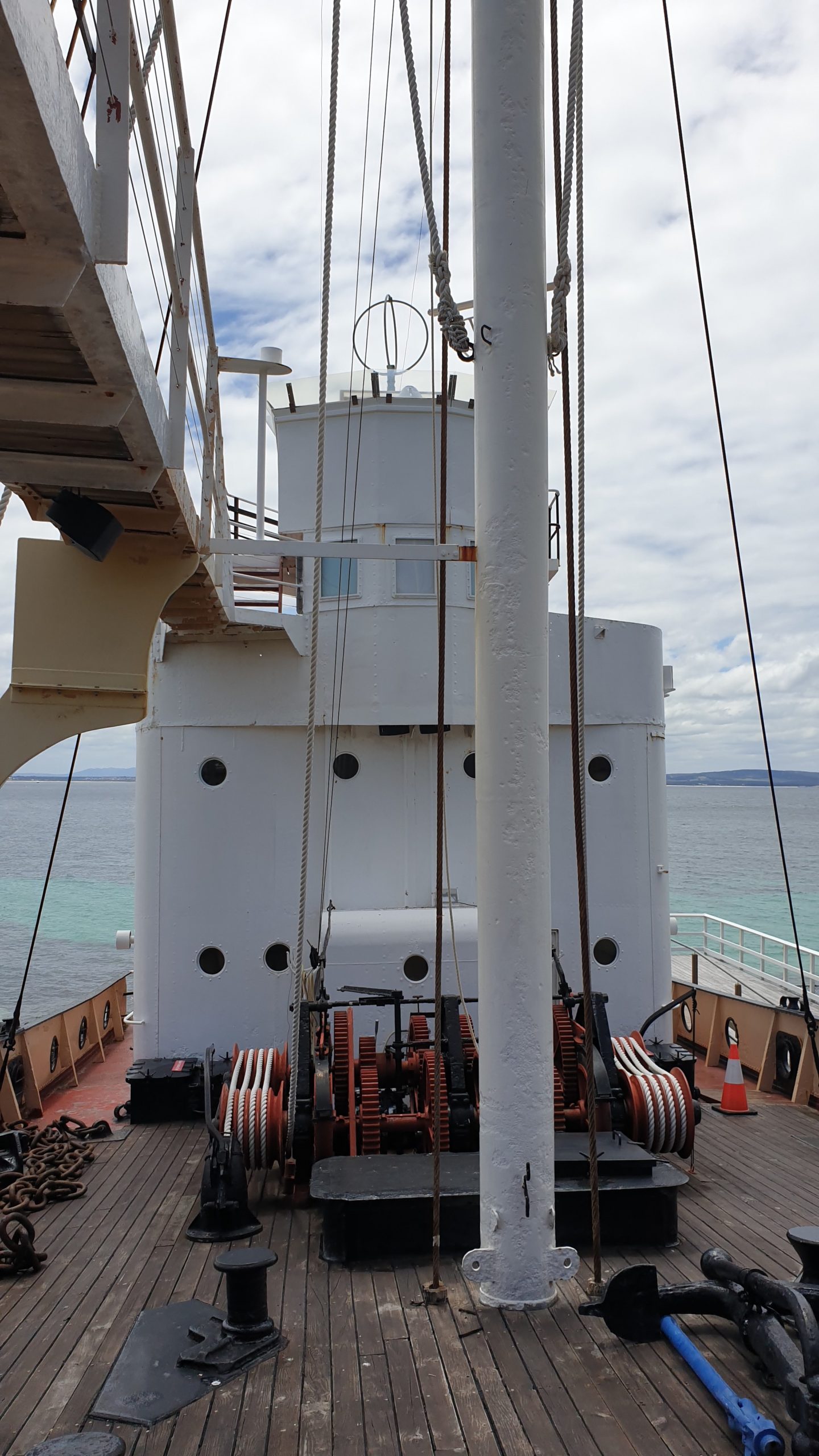
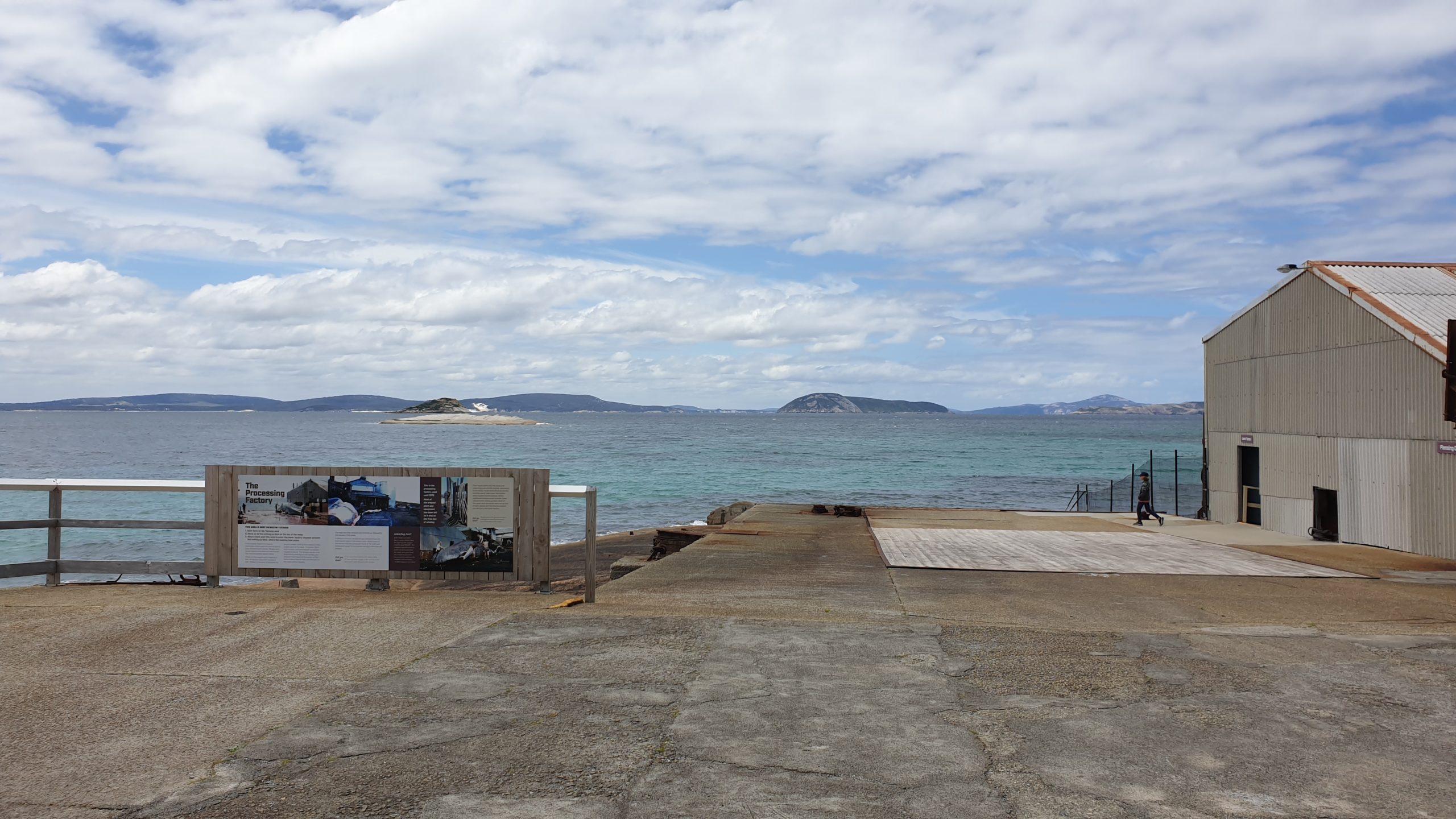
Flensing deck 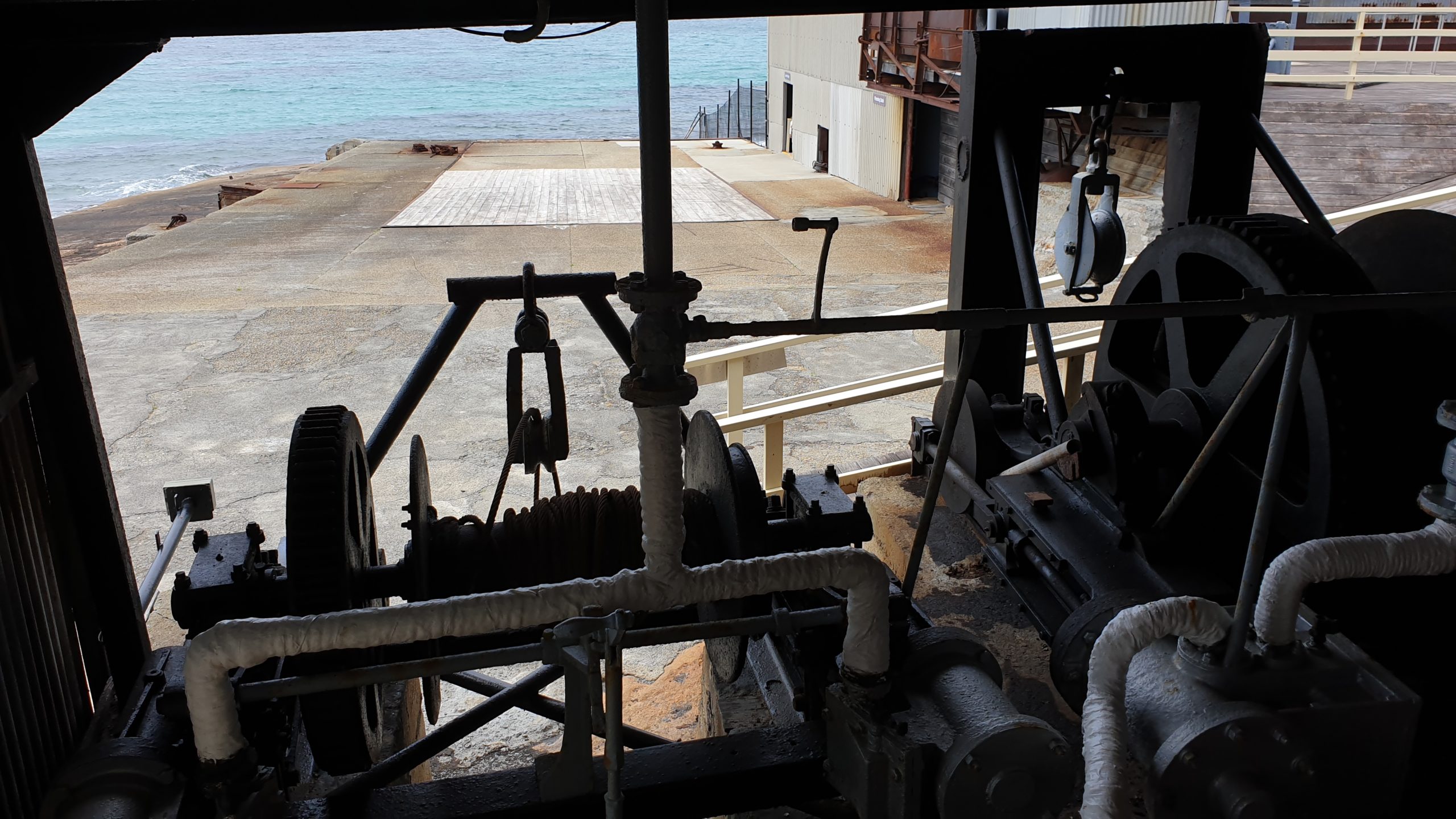
Winches 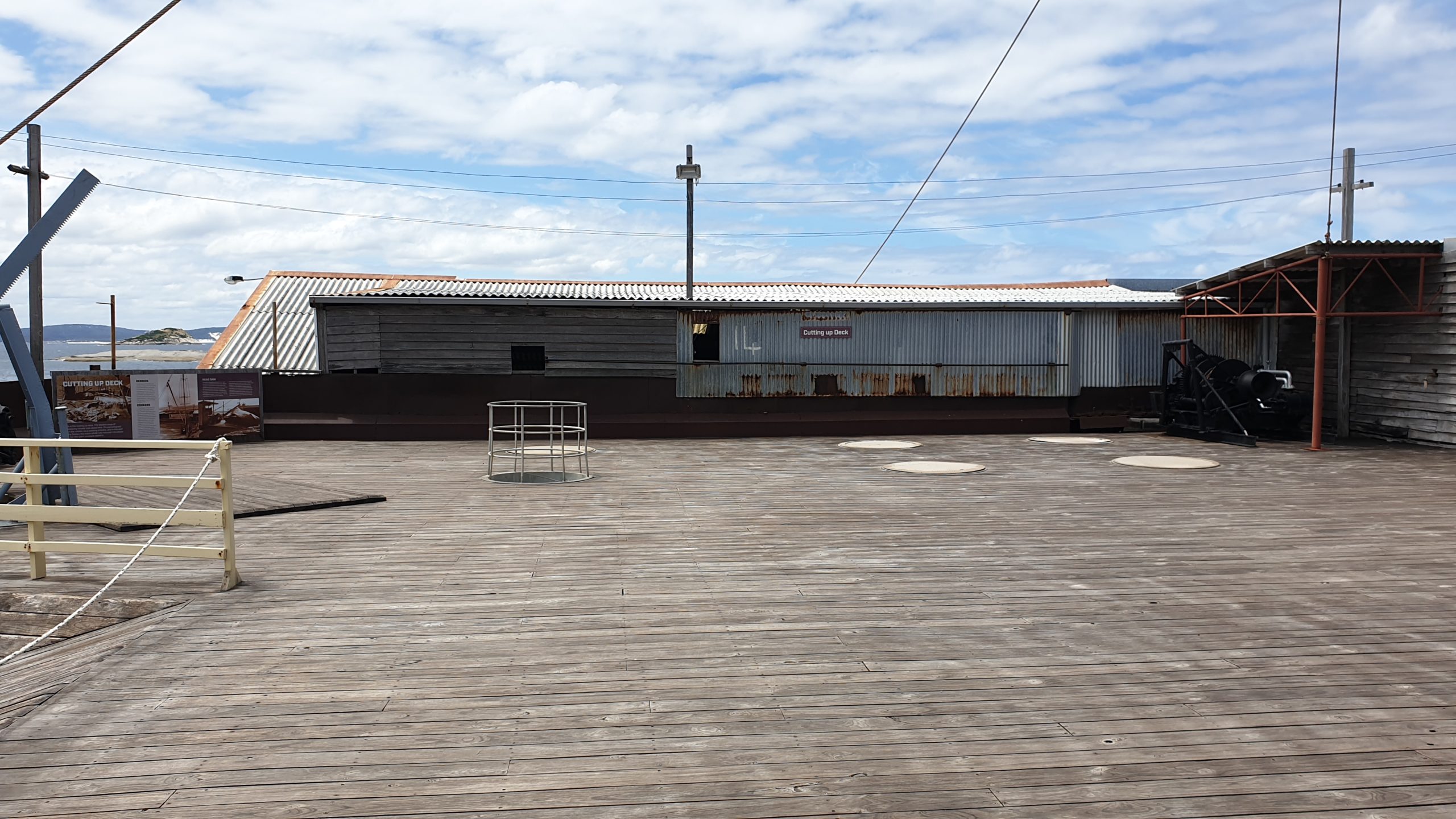
Cutting platform with chutes 
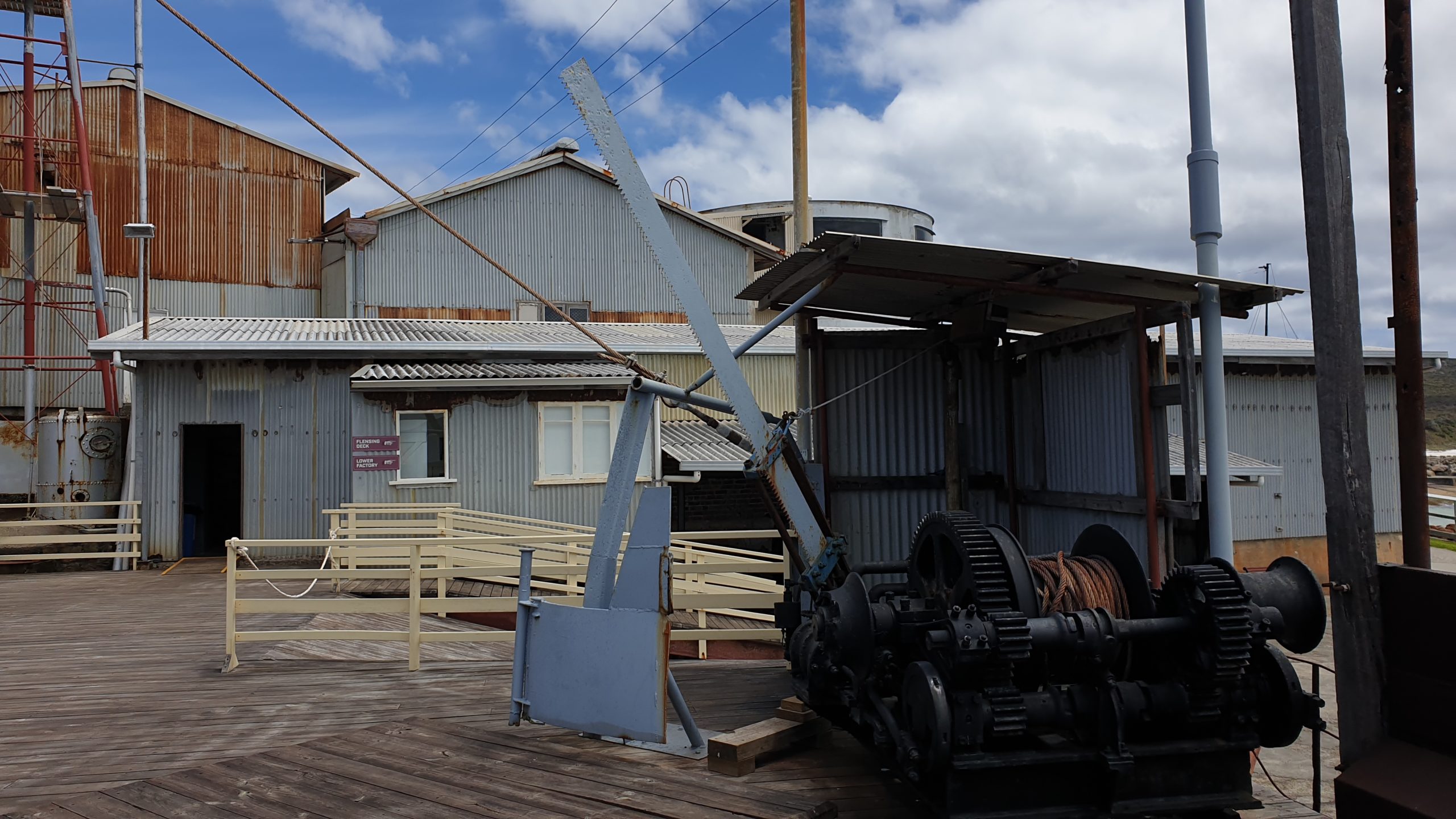
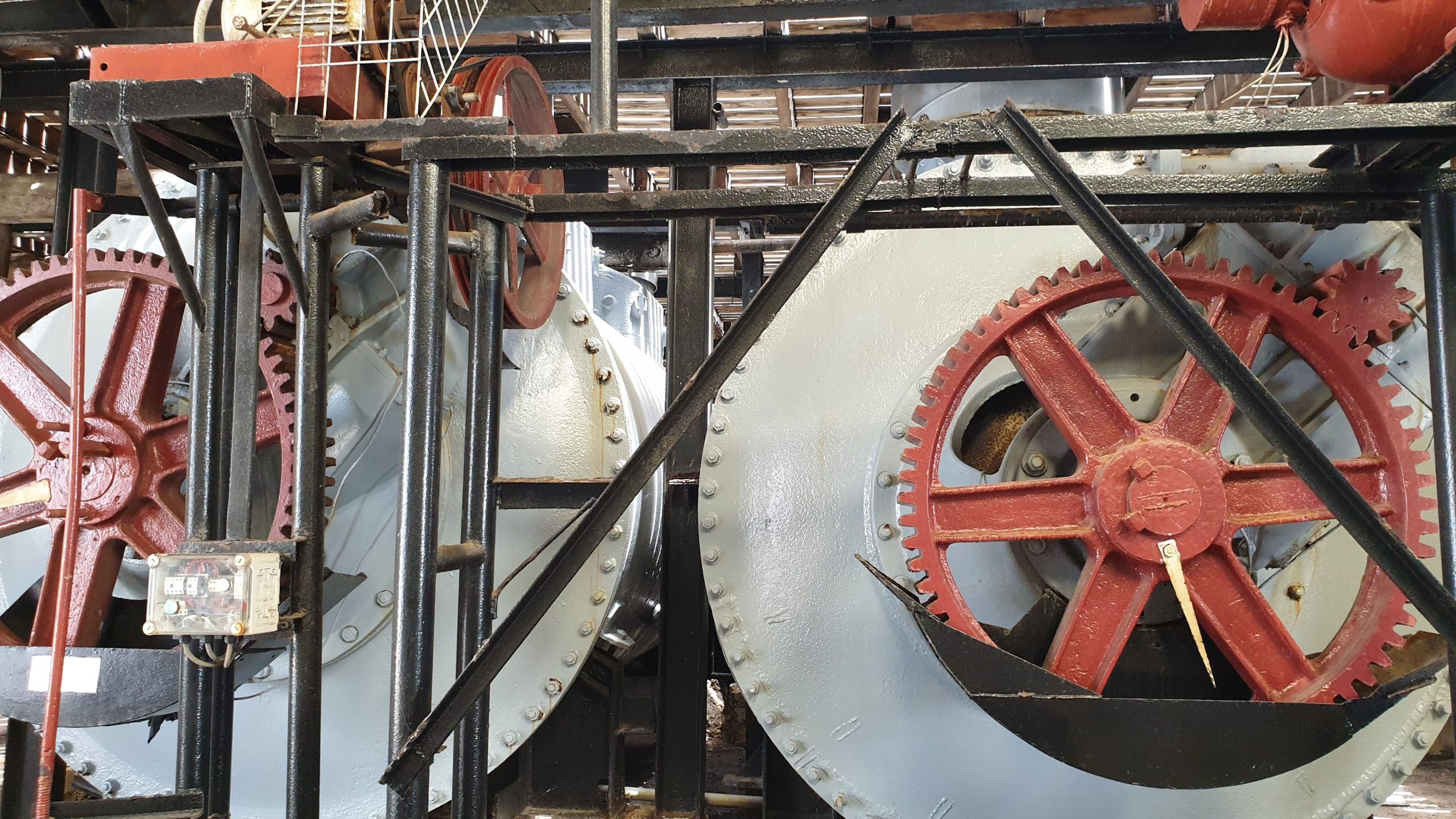
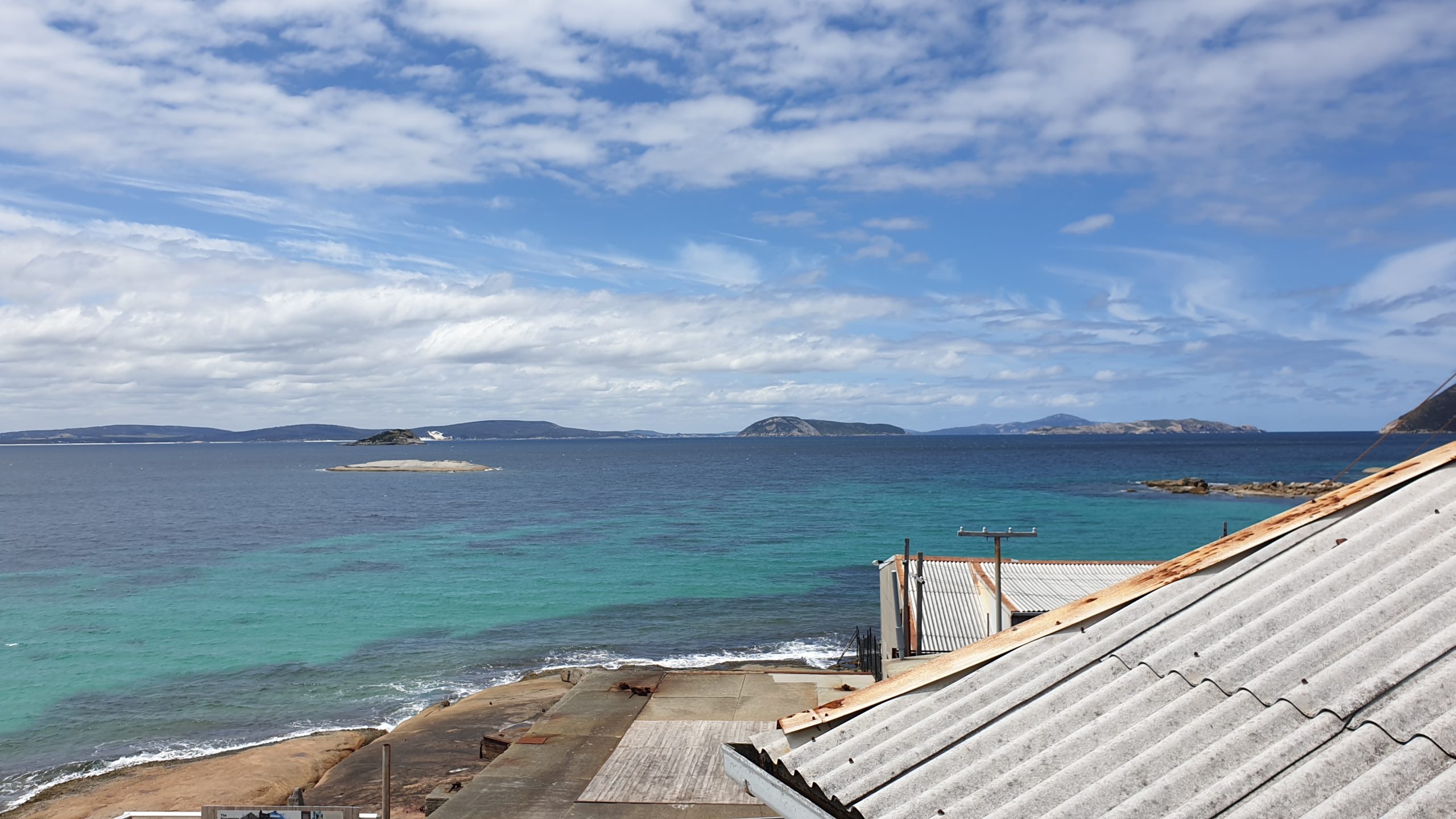
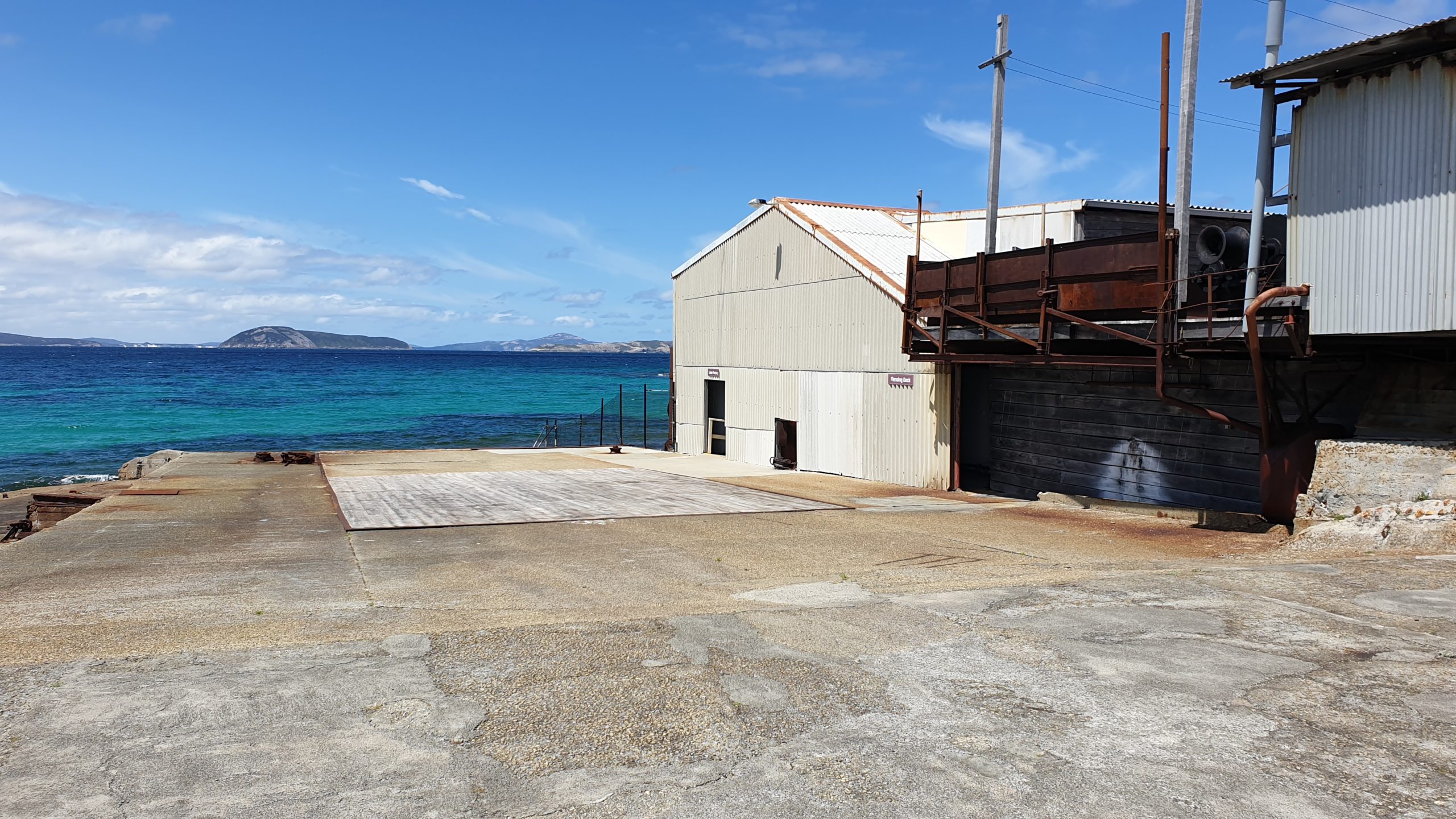
Flensing deck and boiler house on right 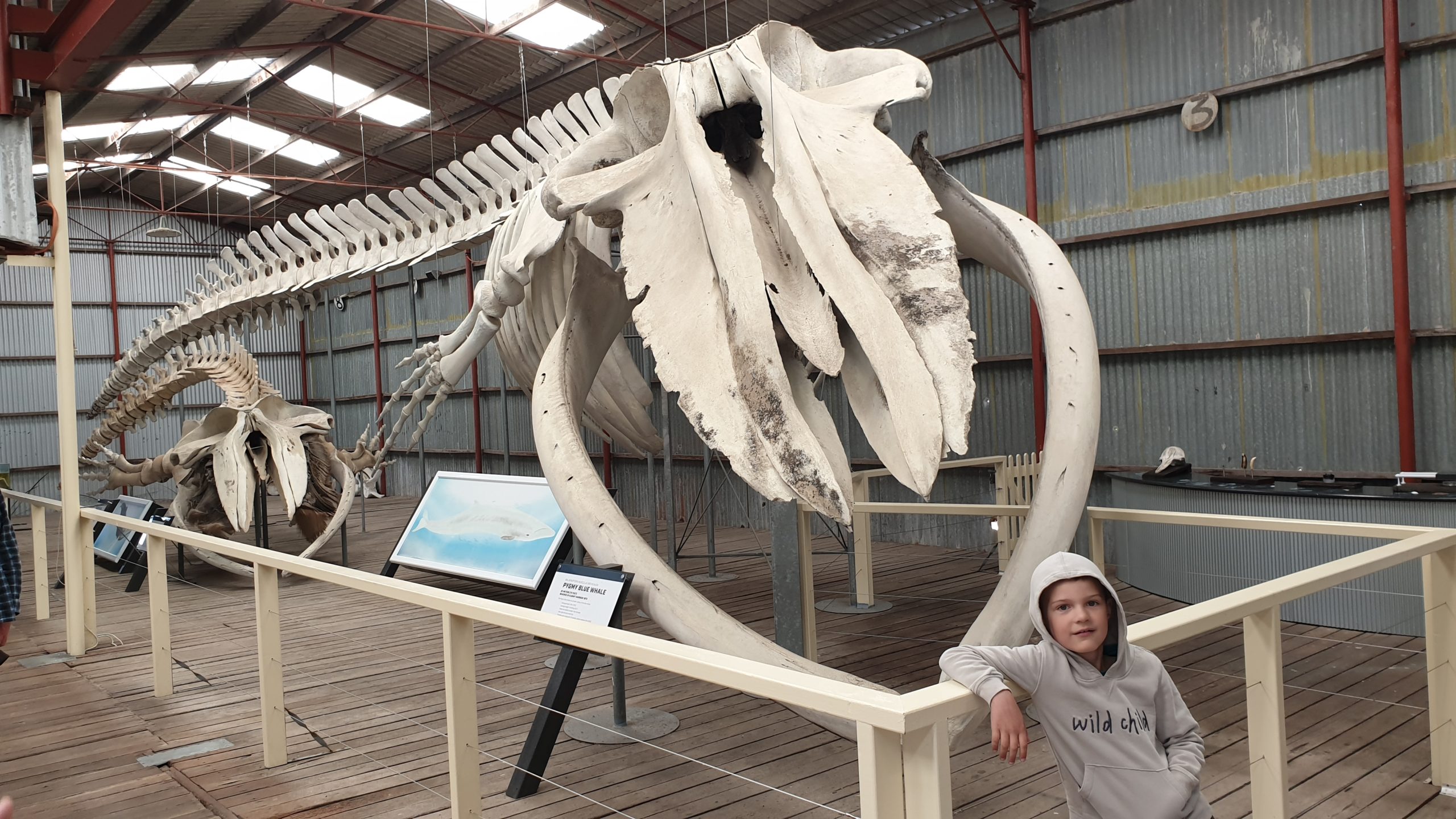
22m long! 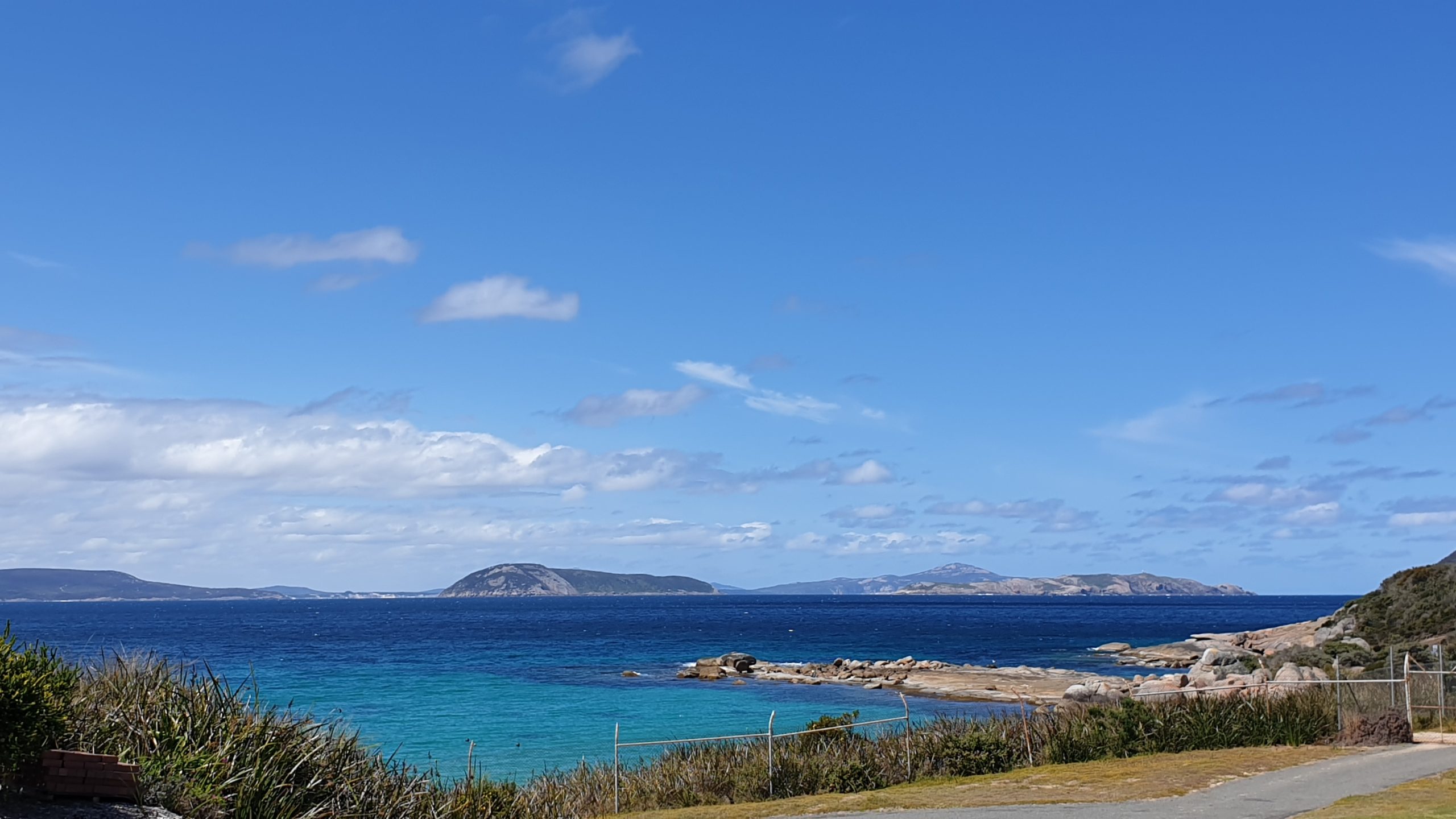
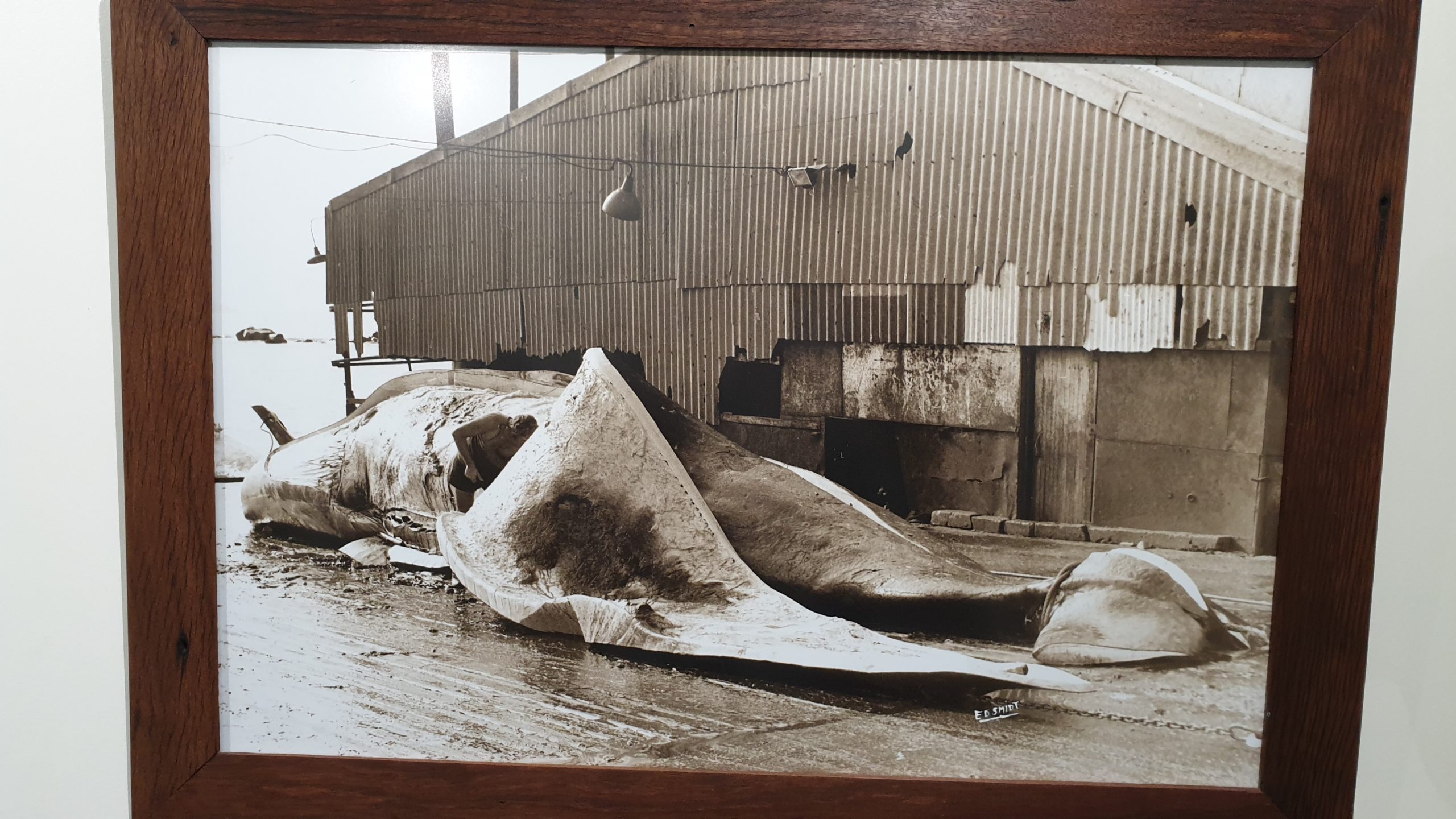
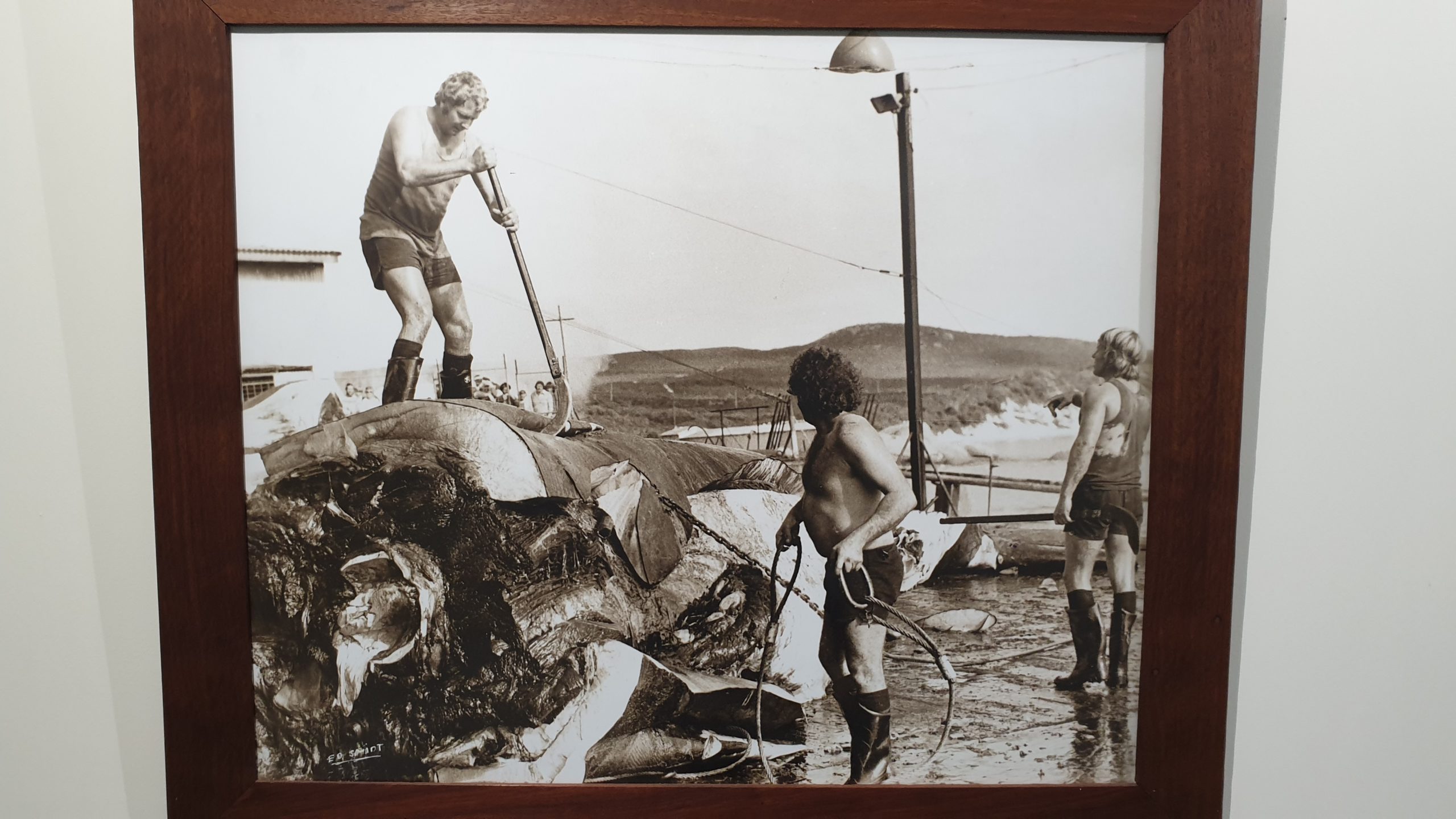
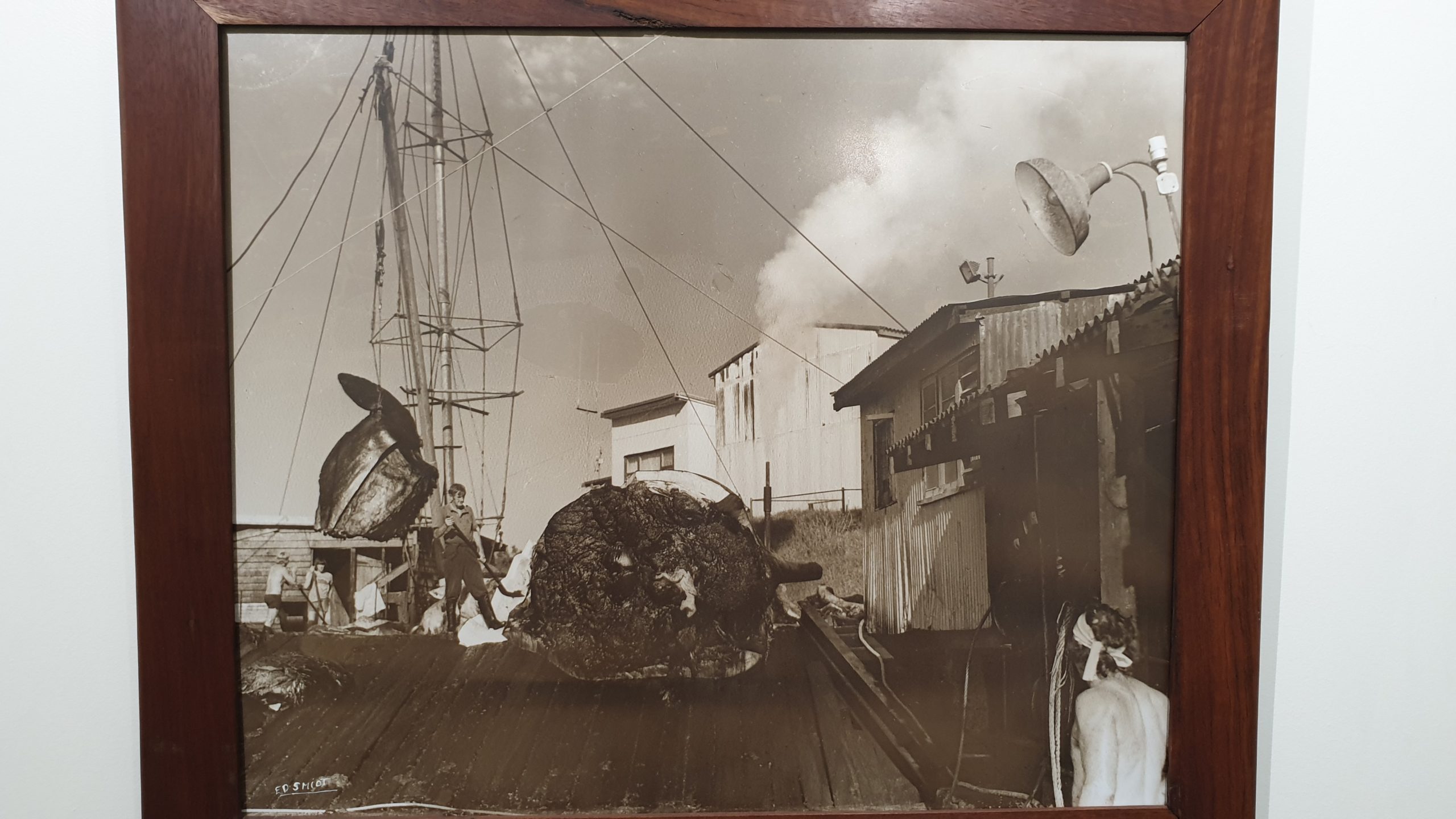
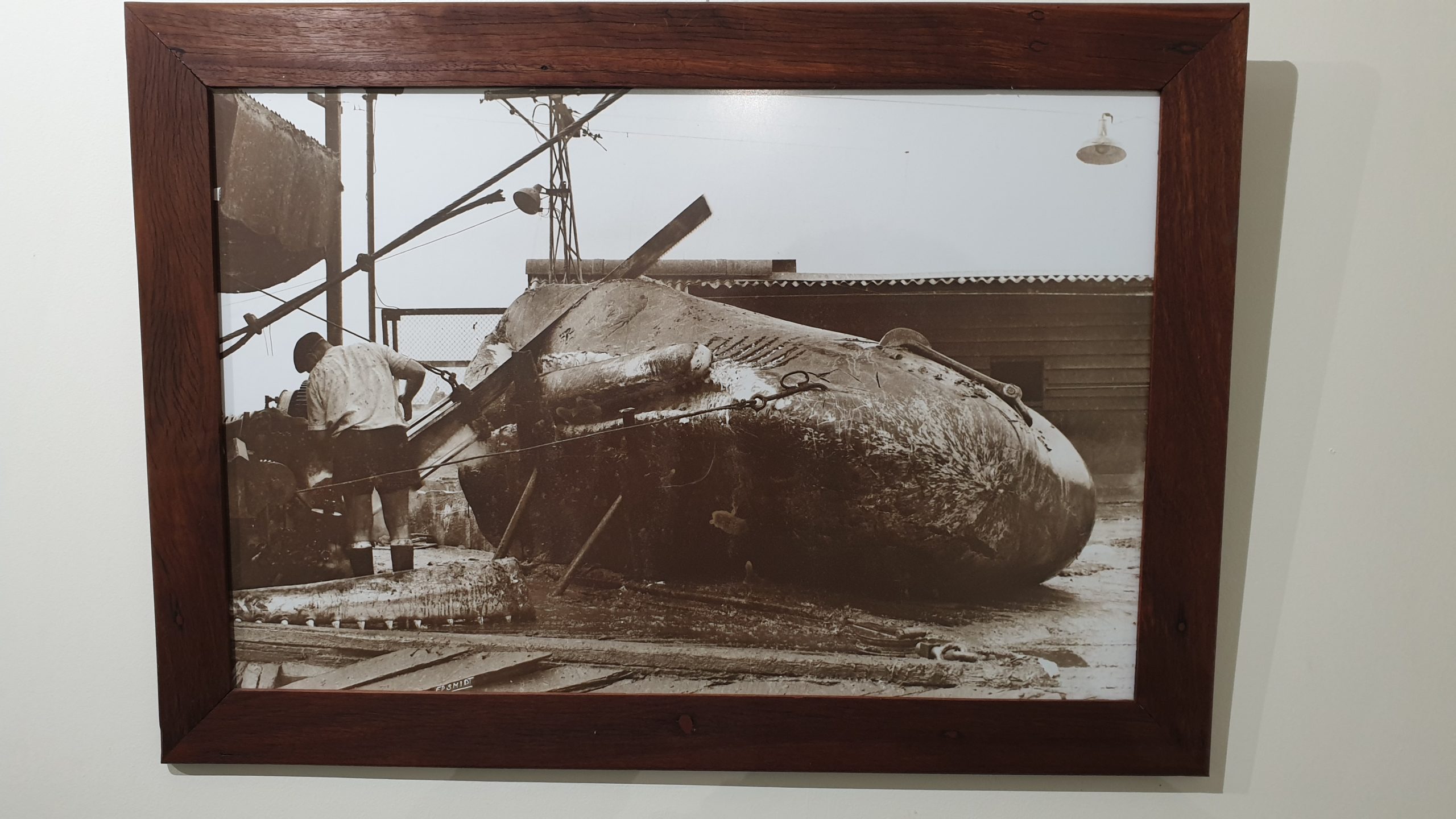
The head saw 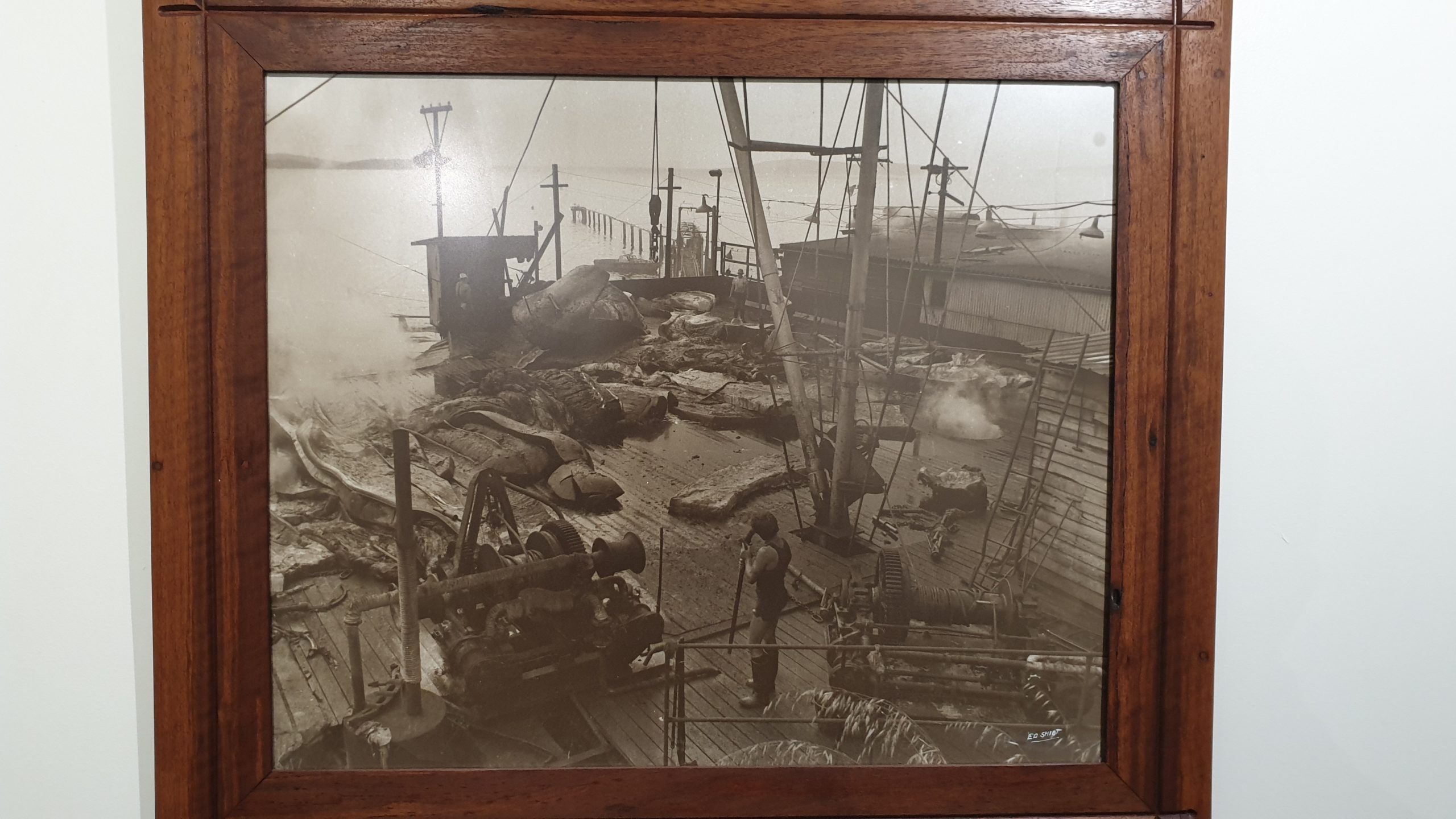
The cutting platform